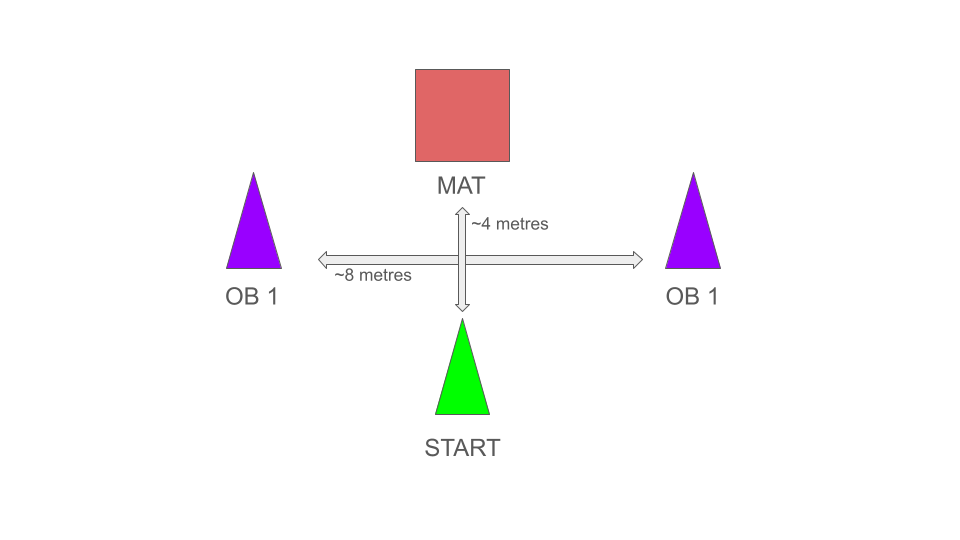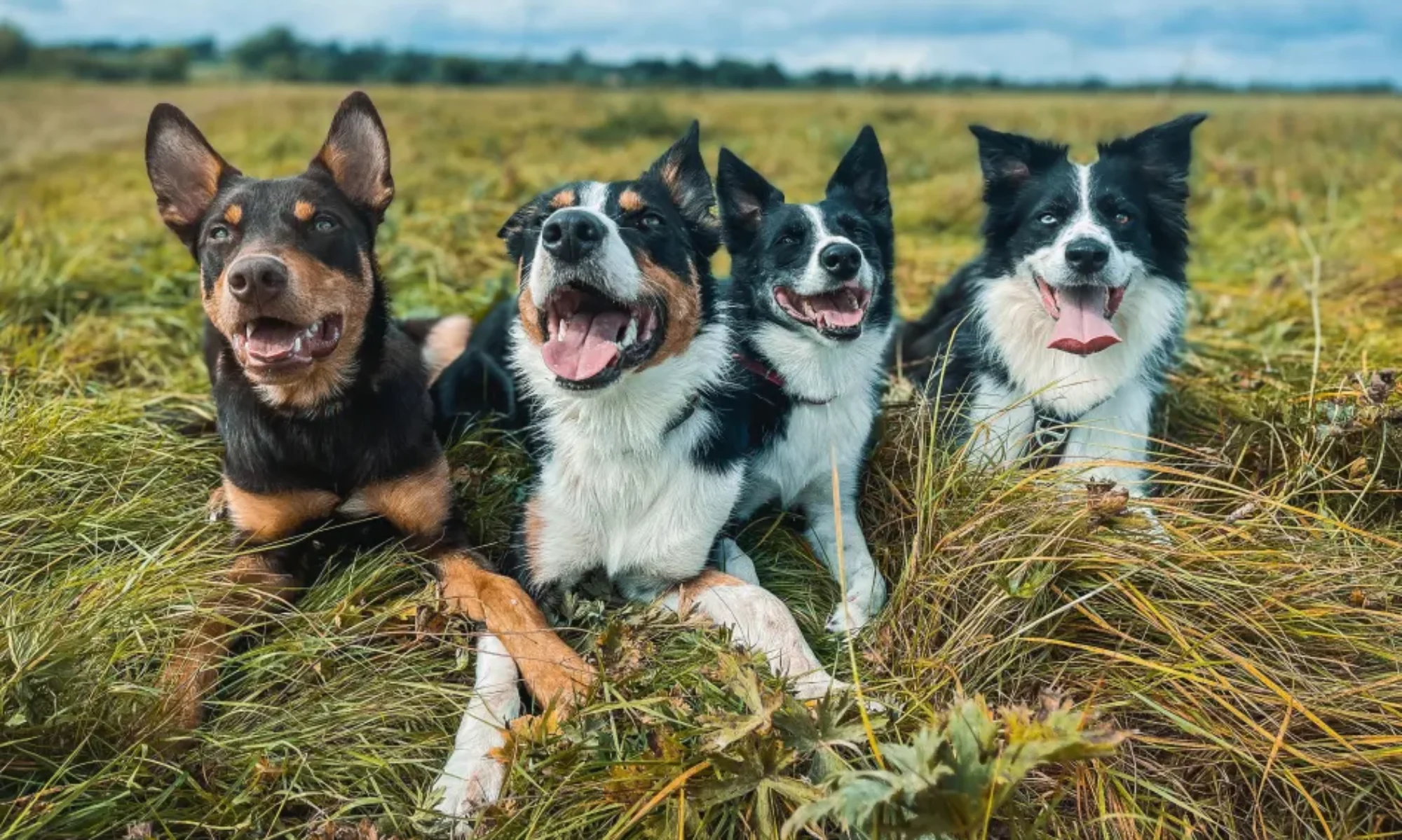Introduction
This is the guide for completing your Level 1 routine.
It consists of 2 exercises. Obedience and Protection.
Each behaviour has 10 points available, totalling 40 for Obedience and 20 for Protection. 60 points in total available.
The pass mark is 35 in total. This allows you to get a pass even if you are unable to complete the protection exercise.
You will need:
- A dog
- A lead
- 3 cones or objects you can use as cones
- A place mat
- An item the dog can search (Keys, tube, coin)
- An item the dog can focus on (Ball, keys, item of clothing)
Rules
- You must not reward your dog during the exercise. You can reward once completed.
- You must not correct your dog. Lead should be loose at all times.
- You can ask your dog more than once to comply but more than once will be reflected in the final score
Level 1 Trial Field
First lay out your trial field to roughly match the diagram below. Distances are a rough guide but must be clearly laid out in a X formation.

Obedience Routine
Start: Handler approaches the starting cone with the dog either in a sit or a stand, ensuring the lead is loose. Signal the start.
- Loose lead walk:
- Walk to the first obedience cone and go around it.
- Proceed to the second obedience cone and go around it as well, both handler and dog moving in the same direction.
- Return to the starting cone and initial position.
- Down stay:
- Walk towards the mat,
- Approaching the mat, turn 180 degrees to face the starting cone, with the dog on or close to the mat.
- Put the dog in a down position and walk back to the starting cone, facing the dog.
- Walk back to the dog and stop in front of it, facing it.
- Positions:
- Command the dog to sit
- Command the dog to stand.
- Return to the heel position and walk the dog back to the starting cone, facing the mat again.
- Search Exercise:
- Take the search item from your pocket. Walk to the mat and place it down and return to your dog. The dog must remain at the starting cone.
- Command the dog to search, allowing the dog to locate and indicate the search item clearly.
- Approach the dog, pick up the search item, and walk the dog back to the start cone in heel position.
- Stop at the starting cone in the original starting position, facing the mat.
Exercise Complete.
Protection Routine
Start: Handler approaches the starting cone with the dog either in a sit or a stand, ensuring the lead is loose. Signal the start.
- Bark at handler
- Either bring dog to your front or walk in front of the dog
- Cue the dog to bark.
- Dog must stop barking or be cued to and then move back into heel. Handler can position themselves to the dog or visa verse.
- Focus on object
- Walk the dog in heel to the mat
- Place down item on the mat
- Cue dog to look at you
- Cue dog to look at object
- Walk the dog in heel back to the start position
Exercise Complete.
Behaviour Glossary
Loose lead walk
- Lead must be loose at all times to avoid point deduction.
- You can change hands during exercise.
- You must not drop the lead unless instructed to do so
- Dog should demonstrate a follower mindset
Down Stay
- Once the dog has performed the down, they should not move to avoid point deduction
- Dog should be touching the mat on their down stay. But as little as one paw is enough. Just demonstrate you have some level of control of where the dog downs
- Barking / whining could result in points deduction
Positions
- Once dog has been told to sit or stand they should demonstrate understanding by not instantly switching to a different position.
- Barking and whining could cost points
- Dog should remain in contact with the mat while changing positions
Search
- Item can be anything but must be placed on the mat
- Indication can be any way you like but must be obvious to the judge that it is a clear indication. A nose touch, a nose point, a handstand on the mat, are all acceptable. If you are unsure it’s obvious what the indication is, notify the judge on submission
Bark at handler
- Dog doesn’t have to have a deep bark to score max points. A little yap is acceptable as long as its on cue and its a bark rather than a yelp of pain or stress.
- Dog must be clearly barking at the handler
- You cannot use a toy or food or any other prop but you can use hand signals to encourage the bark
Focus on object
- Object can be anything but must be placed on the mat
- Object and dog must be visible to the camera
- There should be a clear and obvious distinction between looking at handler and looking at object
- Dog must not interact with the object other than to look at it.

